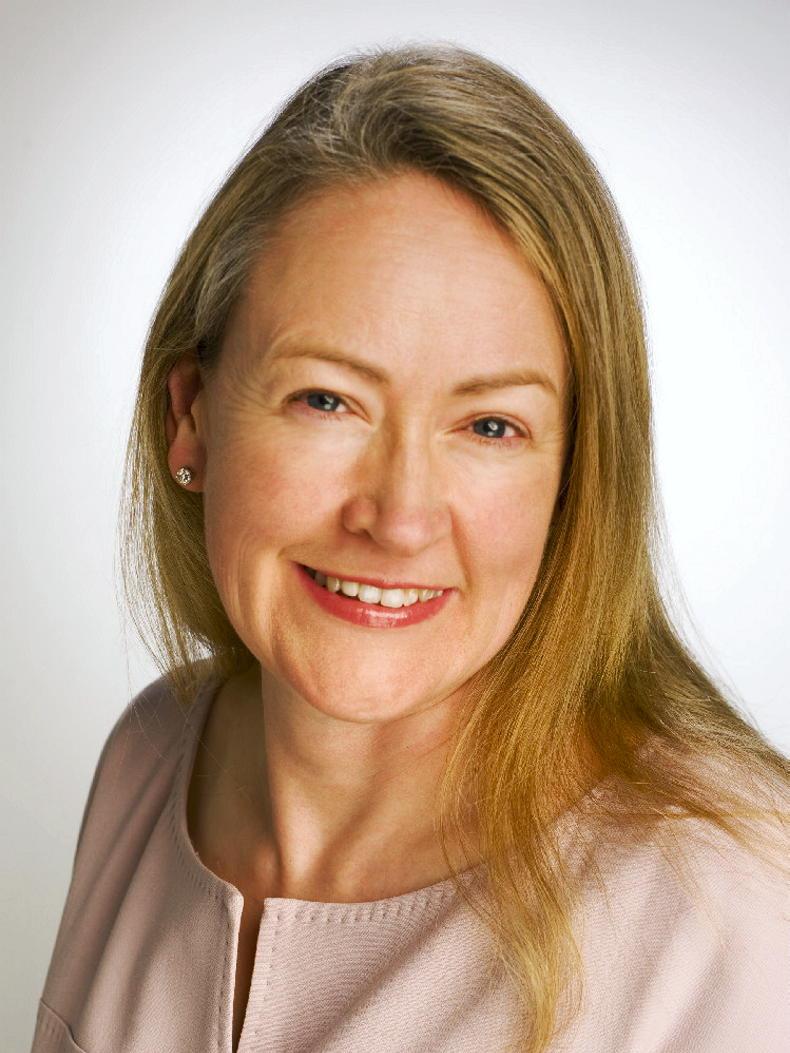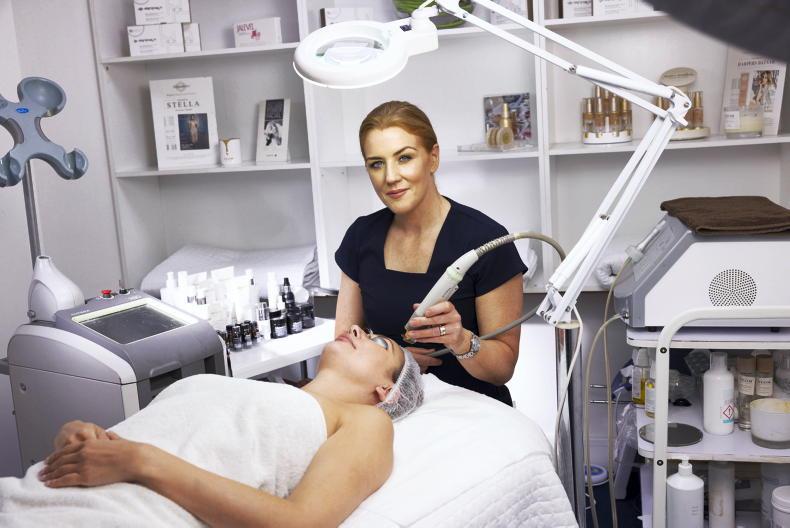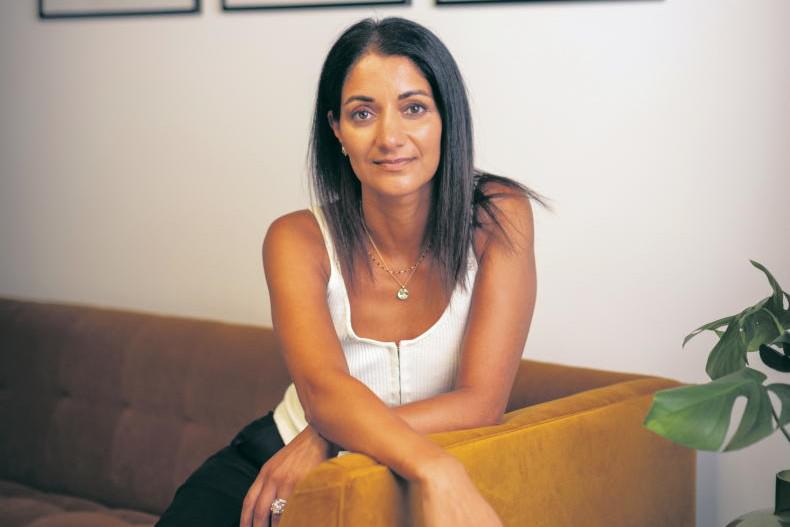Let’s get the misunderstandings about rosacea out of the way first.
Nicknamed ‘the curse of the Celts’ rosacea is incorrectly associated with over-indulgence in alcohol. It isn’t contagious and isn’t caused by poor hygiene. It is often confused with acne but they are completely different conditions.
Acne is caused by hair follicles under the skin becoming blocked with oil and dead skin cells whereas rosacea is an inflammatory disorder. That’s where a person’s immune system causes inflammation by mistakenly attacking its own cells or tissues.
There are four types, varying from mild (flushing) to thick skin and swelling on the nose, often disparagingly called ‘whiskey nose’. However, this has nothing to do with alcohol, it is simply a severe form of rosacea.
One in 10 Irish people have the condition. Having very fair skin makes Irish people more prone to it. It is most common in those between the ages of 40 and 60 years but it can happen at any age and women are three times more likely to get it because of hormonal changes around menopause.
To help educate the public on the real effects of rosacea and to dismantle the misconceptions surrounding this chronic skin condition, the Irish Skin Foundation (ISF), has launched a new online information video resource entitled SkinSideOut to support Rosacea Awareness Month.
The new video resource is presented by Professor Anne-Marie Tobin, Consultant Dermatologist at Tallaght University Hospital, and provides information on the causes, symptoms, and treatments available as well as offering tips on self-management.
Rosacea – what is it?
“Rosacea is a common, chronic inflammatory skin condition, which mainly affects facial skin,” Professor Tobin says.
“It can be recognised by the presence of frequent flushing, persistent redness of central areas of the face, and in some people, acne-like spots, or pimples, and/or visible and dilated blood vessels.”
Other possible symptoms may include skin dryness, skin thickening or swelling, raised red patches, itchy, stinging, or irritated skin and eye discomfort.
What causes rosacea?
The jury is still out on causes but there are a number of theories, according to the professor.
“The theories can include genetics, immune system factors, environmental triggers and the Demodex mite. This isn’t something to be horrified about – this mite is a normal inhabitant of the pores on adult skin. Some research has shown a potential link between higher levels of the Demodex mite in individuals with rosacea compared to those unaffected by rosacea. The reason for this is unknown.”
What can trigger it?
In some instances, people with rosacea can experience flare-ups because of physiological and emotional triggers. These can include ultraviolet light (in daylight), or being out in cold weather. Stress can also set it off as can physical exercise, smoking, eating spicy food, and having hot drinks. Alcohol, even one glass of wine, can aggrivate the condition, but it is not caused by overindulgence.
How is it treated?

Professor Anne-Marie Tobin.
Professor Tobin advises visiting your GP for an assessment and diagnosis.
“You’ll get appropriate advice and treatment and reassurance and be referred on to a dermatologist if required,” she says.
In her video, SkinSideOut Professor Tobin also advises topical treatments including antibiotic creams initially. An azaleic acid cream or gel can be prescribed to fade redness. Ivermection can also be prescribed to work against the Demodex mite. If these don’t work, systemic treatment like a course of oral antibiotics may be prescribed (for their anti-inflammatory effect).
A combination of topical and systemic treatments may also be advised. After that, Roaccutane, under medical supervision, may or may not be an option.
“Laser treatments may also help,” she says. “This can mean intense pulse light therapy once a month for three to six months or pulsed dye laser to target larger vessels in the skin and broken capillaries.”
Tips for managing Rosacea
Skin care products: Choose products that are mild, non-irritating, fragrance-free and alcohol-free.
Cleanse: Wash facial skin with a gentle cleanser or a soap substitute with lukewarm water and pat skin dry. Avoid vigorous washing and scrubbing as this can irritate the skin.
Moisturise: Select a moisturiser which is fragrance free and “non-comedogenic” or “oil-free”. Non-comedogenic means that a product contains ingredients that won’t clog or block the pores on your skin. Apply moisturiser to facial skin regularly, to help prevent dryness and sensitivity.
UV protection: It has been suggested that ultraviolet rays can trigger a rosacea flare or aggravate symptoms. It is therefore advisable to avoid direct sunlight by seeking shade, wearing a hat with a wide brim, sunglasses, avoiding the midday sun and also using a broad-spectrum sunscreen, offering protection from both UVA/UVB, with a minimum SPF 30.
Shaving: Electric shavers may be more comfortable for men with rosacea. Avoid any shaving creams or lotions that burn or sting your skin.
Eye care: If your eyes are affected, consult your doctor. For mild eye symptoms which may include dryness and/or a gritty feeling in the eyes, eye care may help in managing these symptoms. This can include gently washing the eyes twice daily with warm water and using artificial tears.
The ISF also recommends keeping a diary of flare-ups in order to identify your triggers. Avoiding these where possible may help control symptoms and reduce flares of rosacea.
• The rosacea information video presented by Professor Tobin is available on the ISF website at irishskin.ie
‘Laser treatment is gentle and non-invasive’

Eavanna Breen.
Eavanna Breen is a Dublin based and CIDESCO-trained beauty therapist who treats many patients with rosacea at the Eavanna Breen Skin and Laser Clinic in Dublin 2.
The international CIDESCO Diploma is awarded to candidates who have passed their examinations and given proof of having gained at least 600 hours work experience in a beauty centre/salon.
“When people come to me they want to get their rosacea under control,” Eavanna says, “the redness, the irritation, the heat in the skin… that’s because it is impacting on their lifestyle and social scenarios and they just want to get their skin clear.”
The rosacea varies from person to person, she states.
“Some people deal with it for years and have tried lots of treatments and medications and nothing has worked so it is about teaching them how to best manage it.
With others, it may have just started in recent times so, in the consultation, we figure out their triggers with them and what the best course of action is. With rosacea it isn’t about cure, it is about management. We get referrals from GPs and people self-refer but we would refer a person on to a dermatologist if necessary too.”
A lot of women in particular feel quite embarrassed by their rosacea, she says.
“They can’t go out without makeup and they feel like they are always just constantly red. It has a massive impact on people’s self esteem and confidence.”
One of the most successful treatments she offers is the ‘Laser Genesis Treatment’, a series of six treatments, one every second week.
“It is a 45 minute session and it is non-invasive and gentle.”
But what would her best tips be for anyone with rosacea?
“Use sunscreen every day. Then, if possible, seek help from a therapist to figure out what the triggers for your rosacea are and then get a personalised skincare routine.”
• eavannabreen.ie
How to tell the difference between acne and rosacea
Comedones (blackheads and whiteheads) are a defining feature of acne. These aren’t seen in rosacea although both conditions can feature papules and pustules. Rosacea only occurs on the face and neck and eyes may be affected also. Acne isn’t limited to your face and neck. It’s also commonly found on the back and shoulders. Rosacea skin is hypersensitive with symptoms worsening even from minor exposures, like being out in the wind. UCD Professor of Dermatology, Frank Powell, one of Ireland’s leading experts on rosacea has written a resource booklet entitled ‘Rosacea: The Curse of the Celts – A Handbook for Patients and the Public’.
It is available on the ucd.ie.
In it, he mentions the stigma that can occur and the importance of the public having a better understanding of rosacea.
“Because the redness of rosacea is made worse with alcohol intake some people have wrongly attributed the cause of this disorder to alcohol excess. This misconception causes additional social problems for people who suffer from rosacea.
“That is one of the reasons that public education about rosacea is so important. Until this message gets across there is a form of social stigmatization of people with rosacea.”
One in 10 Irish people develop rosacea It is most common in the 40-60 years age group More women than men get it It isn’t contagious It has nothing to do with over-indulgence in alcohol It shouldn’t be confused with acne Understanding triggers is the key to management Many treatments are available Sunscreen SP50 should be worn every day A skincare routine is important – moisturiser should be applied first, then sunscreen, then make upThe ISF is a national charity established in 2011 to give those with painful skin conditions access to specialist, accessible and free guidance from clinical dermatology experts.
Read more
Meet the Maker: Molly Ellis
Editorial: super supermarkets
Let’s get the misunderstandings about rosacea out of the way first.
Nicknamed ‘the curse of the Celts’ rosacea is incorrectly associated with over-indulgence in alcohol. It isn’t contagious and isn’t caused by poor hygiene. It is often confused with acne but they are completely different conditions.
Acne is caused by hair follicles under the skin becoming blocked with oil and dead skin cells whereas rosacea is an inflammatory disorder. That’s where a person’s immune system causes inflammation by mistakenly attacking its own cells or tissues.
There are four types, varying from mild (flushing) to thick skin and swelling on the nose, often disparagingly called ‘whiskey nose’. However, this has nothing to do with alcohol, it is simply a severe form of rosacea.
One in 10 Irish people have the condition. Having very fair skin makes Irish people more prone to it. It is most common in those between the ages of 40 and 60 years but it can happen at any age and women are three times more likely to get it because of hormonal changes around menopause.
To help educate the public on the real effects of rosacea and to dismantle the misconceptions surrounding this chronic skin condition, the Irish Skin Foundation (ISF), has launched a new online information video resource entitled SkinSideOut to support Rosacea Awareness Month.
The new video resource is presented by Professor Anne-Marie Tobin, Consultant Dermatologist at Tallaght University Hospital, and provides information on the causes, symptoms, and treatments available as well as offering tips on self-management.
Rosacea – what is it?
“Rosacea is a common, chronic inflammatory skin condition, which mainly affects facial skin,” Professor Tobin says.
“It can be recognised by the presence of frequent flushing, persistent redness of central areas of the face, and in some people, acne-like spots, or pimples, and/or visible and dilated blood vessels.”
Other possible symptoms may include skin dryness, skin thickening or swelling, raised red patches, itchy, stinging, or irritated skin and eye discomfort.
What causes rosacea?
The jury is still out on causes but there are a number of theories, according to the professor.
“The theories can include genetics, immune system factors, environmental triggers and the Demodex mite. This isn’t something to be horrified about – this mite is a normal inhabitant of the pores on adult skin. Some research has shown a potential link between higher levels of the Demodex mite in individuals with rosacea compared to those unaffected by rosacea. The reason for this is unknown.”
What can trigger it?
In some instances, people with rosacea can experience flare-ups because of physiological and emotional triggers. These can include ultraviolet light (in daylight), or being out in cold weather. Stress can also set it off as can physical exercise, smoking, eating spicy food, and having hot drinks. Alcohol, even one glass of wine, can aggrivate the condition, but it is not caused by overindulgence.
How is it treated?

Professor Anne-Marie Tobin.
Professor Tobin advises visiting your GP for an assessment and diagnosis.
“You’ll get appropriate advice and treatment and reassurance and be referred on to a dermatologist if required,” she says.
In her video, SkinSideOut Professor Tobin also advises topical treatments including antibiotic creams initially. An azaleic acid cream or gel can be prescribed to fade redness. Ivermection can also be prescribed to work against the Demodex mite. If these don’t work, systemic treatment like a course of oral antibiotics may be prescribed (for their anti-inflammatory effect).
A combination of topical and systemic treatments may also be advised. After that, Roaccutane, under medical supervision, may or may not be an option.
“Laser treatments may also help,” she says. “This can mean intense pulse light therapy once a month for three to six months or pulsed dye laser to target larger vessels in the skin and broken capillaries.”
Tips for managing Rosacea
Skin care products: Choose products that are mild, non-irritating, fragrance-free and alcohol-free.
Cleanse: Wash facial skin with a gentle cleanser or a soap substitute with lukewarm water and pat skin dry. Avoid vigorous washing and scrubbing as this can irritate the skin.
Moisturise: Select a moisturiser which is fragrance free and “non-comedogenic” or “oil-free”. Non-comedogenic means that a product contains ingredients that won’t clog or block the pores on your skin. Apply moisturiser to facial skin regularly, to help prevent dryness and sensitivity.
UV protection: It has been suggested that ultraviolet rays can trigger a rosacea flare or aggravate symptoms. It is therefore advisable to avoid direct sunlight by seeking shade, wearing a hat with a wide brim, sunglasses, avoiding the midday sun and also using a broad-spectrum sunscreen, offering protection from both UVA/UVB, with a minimum SPF 30.
Shaving: Electric shavers may be more comfortable for men with rosacea. Avoid any shaving creams or lotions that burn or sting your skin.
Eye care: If your eyes are affected, consult your doctor. For mild eye symptoms which may include dryness and/or a gritty feeling in the eyes, eye care may help in managing these symptoms. This can include gently washing the eyes twice daily with warm water and using artificial tears.
The ISF also recommends keeping a diary of flare-ups in order to identify your triggers. Avoiding these where possible may help control symptoms and reduce flares of rosacea.
• The rosacea information video presented by Professor Tobin is available on the ISF website at irishskin.ie
‘Laser treatment is gentle and non-invasive’

Eavanna Breen.
Eavanna Breen is a Dublin based and CIDESCO-trained beauty therapist who treats many patients with rosacea at the Eavanna Breen Skin and Laser Clinic in Dublin 2.
The international CIDESCO Diploma is awarded to candidates who have passed their examinations and given proof of having gained at least 600 hours work experience in a beauty centre/salon.
“When people come to me they want to get their rosacea under control,” Eavanna says, “the redness, the irritation, the heat in the skin… that’s because it is impacting on their lifestyle and social scenarios and they just want to get their skin clear.”
The rosacea varies from person to person, she states.
“Some people deal with it for years and have tried lots of treatments and medications and nothing has worked so it is about teaching them how to best manage it.
With others, it may have just started in recent times so, in the consultation, we figure out their triggers with them and what the best course of action is. With rosacea it isn’t about cure, it is about management. We get referrals from GPs and people self-refer but we would refer a person on to a dermatologist if necessary too.”
A lot of women in particular feel quite embarrassed by their rosacea, she says.
“They can’t go out without makeup and they feel like they are always just constantly red. It has a massive impact on people’s self esteem and confidence.”
One of the most successful treatments she offers is the ‘Laser Genesis Treatment’, a series of six treatments, one every second week.
“It is a 45 minute session and it is non-invasive and gentle.”
But what would her best tips be for anyone with rosacea?
“Use sunscreen every day. Then, if possible, seek help from a therapist to figure out what the triggers for your rosacea are and then get a personalised skincare routine.”
• eavannabreen.ie
How to tell the difference between acne and rosacea
Comedones (blackheads and whiteheads) are a defining feature of acne. These aren’t seen in rosacea although both conditions can feature papules and pustules. Rosacea only occurs on the face and neck and eyes may be affected also. Acne isn’t limited to your face and neck. It’s also commonly found on the back and shoulders. Rosacea skin is hypersensitive with symptoms worsening even from minor exposures, like being out in the wind. UCD Professor of Dermatology, Frank Powell, one of Ireland’s leading experts on rosacea has written a resource booklet entitled ‘Rosacea: The Curse of the Celts – A Handbook for Patients and the Public’.
It is available on the ucd.ie.
In it, he mentions the stigma that can occur and the importance of the public having a better understanding of rosacea.
“Because the redness of rosacea is made worse with alcohol intake some people have wrongly attributed the cause of this disorder to alcohol excess. This misconception causes additional social problems for people who suffer from rosacea.
“That is one of the reasons that public education about rosacea is so important. Until this message gets across there is a form of social stigmatization of people with rosacea.”
One in 10 Irish people develop rosacea It is most common in the 40-60 years age group More women than men get it It isn’t contagious It has nothing to do with over-indulgence in alcohol It shouldn’t be confused with acne Understanding triggers is the key to management Many treatments are available Sunscreen SP50 should be worn every day A skincare routine is important – moisturiser should be applied first, then sunscreen, then make upThe ISF is a national charity established in 2011 to give those with painful skin conditions access to specialist, accessible and free guidance from clinical dermatology experts.
Read more
Meet the Maker: Molly Ellis
Editorial: super supermarkets











SHARING OPTIONS